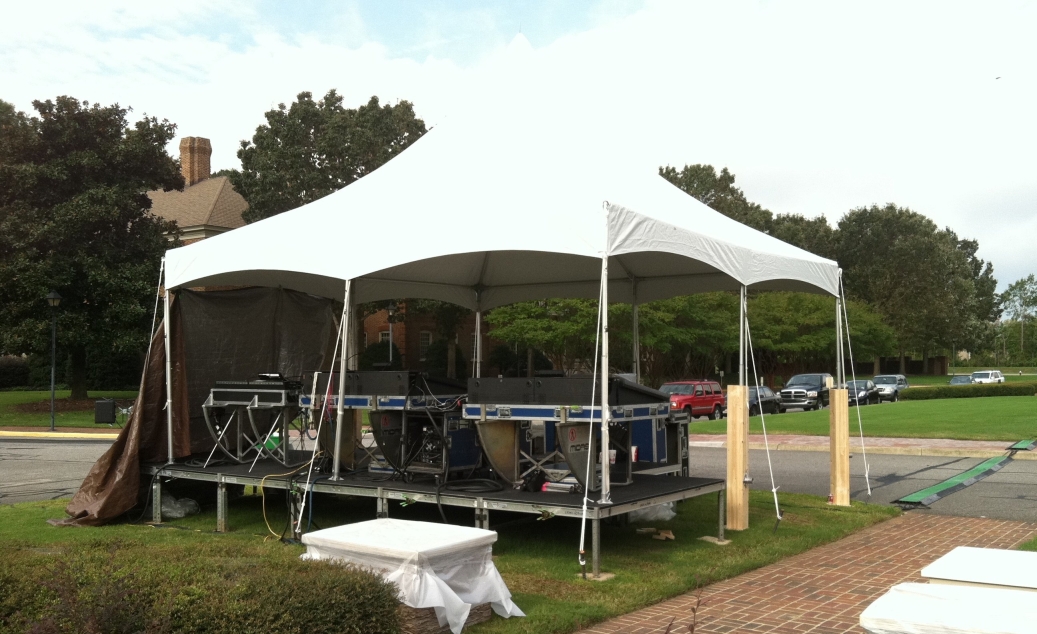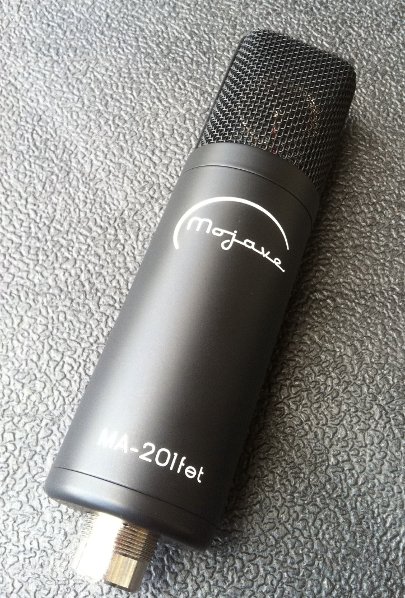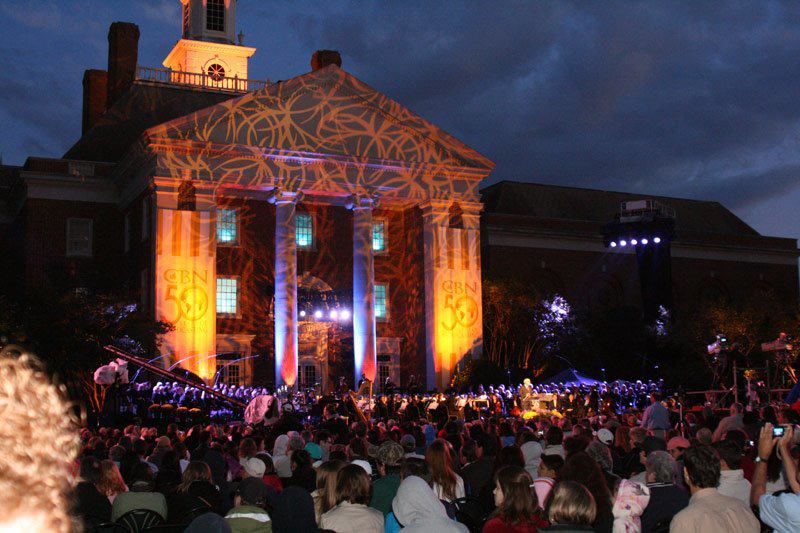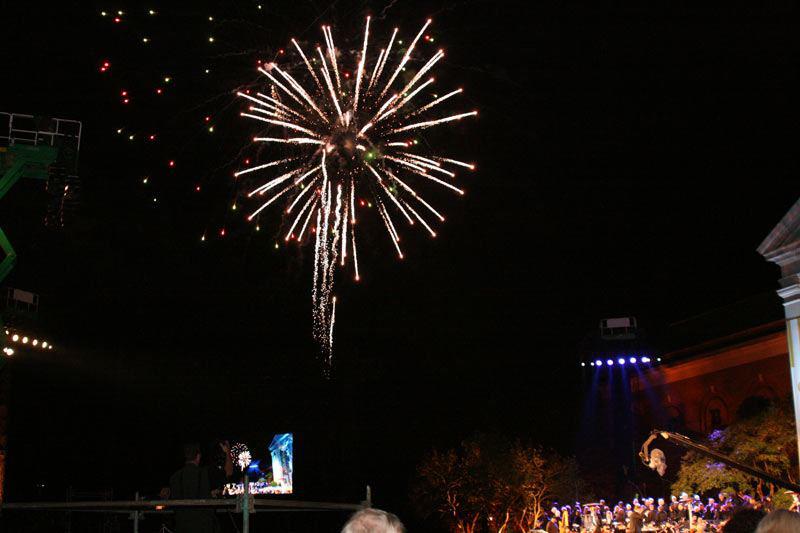A "Big Little" P.A. Production
On the 50th anniversary of its first broadcast, the Christian Broadcasting Network kicked off a huge, multi-day celebration culminating in an all-day event with an expected crowd of 10,000 entertained from three stages with national and local acts. They would offer a petting zoo, rides, an international festival, martial arts demonstrations, food, vendors, movies, and an historical exposition. The event would culminate on a Saturday evening with a televised two-hour show on yet another stage featuring a 50-piece orchestra, a 200-voice choir, two national recording acts, the state governor, mayors, featured speakers, and fireworks. The crowd for the evening celebration was projected to be anywhere from 7-15k. There would be five first engineers to handle the tasks so there was a lot of pre-planning and organization required. A month out from the date I was asked to mix the orchestra for the culminating evening event and asked to plan and spec my mic and console needs. As usual, the scene shifted and things didn’t get anywhere near settled in until about a week before the event. From there, things were still fluid up until the day of the event. The final line-up for my ensemble settled into a pops orchestra with a piano, drum kit, and full rhythm section. We chose to go with close mic'ing of individual instruments to reduce chances of feedback. Other than the string mics, which were Countryman clip-ons, I spec’d the mics as much as possible to be supplied from our various mic lockers. We did add an Audix drum mic kit and six Sennheiser MD-441s:
A week before the event the carpenters began assembling the custom built, split-level stage. The orchestra would occupy the lower level and the visiting national acts would occupy the upper level behind and above. They'd been building the scenery and props for months.
A couple of days later the steel arrived on flat bed trucks and the crew began assembly. The bases were anchored by large gray buckets that were filled with water once the bases were in place.
My pictures won’t exactly reflect the order of construction because I wasn’t there for every step. Two large trusses carried flown video monitors, lighting, and the main P.A. speakers, and provided hoists to lift them. once the trusses were assembled, the bases were covered in black drop.
My personal involvement with the site began on the morning of the fourth day before my event. There would be one event two days before mine, an evening concert with a band and a dance troupe. Because we’d be sharing the stage and all facilities, it was decided to pool the crews to make the task go quicker. Early on a foggy morning the consoles were delivered to front-of-house world.
On this stage, we would provide the PA cabs and amps. We would rent the consoles for front of house and monitor world. This was the first outdoor run for our new L-Acoustics V-Dosc line array system. After the computations for cabinet angles were made it went together quickly and flew out. In the pic below, top to bottom are the subwoofers, hi/mid cabs, and on the ground, the sub-subwoofers.
Because the crowd space was long and narrow, we rented a third array that we set as a delay tower to reach the back rows.
As we began assembling front of house world, a technician began the exacting task of routing the signals to the three primary mixing locations or "worlds." We would have three 48 channel consoles in front of house world, two 48 channel consoles in monitor world, and the Calrec broadcast console in a nearby control room fed by three, 48 channel Ethernet stage boxes. All of this was fed by a master splitter system. In the pic below, the Calrec stage boxes are on top of the splitter boxes.
Meanwhile our workboxs and those of the PA rental company were brought in, filled with the mics and DIs necessary to pick up all the instruments and sources.
All of this resided next to monitor world, behind the house right side of the stage. Split world and monitor world each had their own tent. Monitor world revolved around its pair of Yamaha PM-5D consoles.
While the splits and monitor systems came together, we began assembling front of house world.
There were three 48 channel consoles in FOH: one Yamaha PM-5D for the visiting acts, a Yamaha M7CL for the orchestra, and another PM-5D for the “show” console. The visiting act console supported the needs of each of the acts who played along with the orchestra. Their engineers would be able to set the console according to their needs and save the memories. The second console, my M7CL, handled mixing the orchestra. Each of these provided a stereo mix plus a subwoofer feed that was picked up by the show console. The show console took these feeds, the podium microphones, video server audio outputs to support video playbacks in the video walls, and sixteen choir mics. Left to right you see: visiting acts, show, orchestra:
Once we got the various worlds set up, it was time to check continuity on the 148 lines involved in the project. We finally knocked off at nine that night after getting everything prepared for the next day and covering everything with tarps to stave off an approaching rainstorm. The next morning we discovered that the visiting acts FOH console had taken some water and refused to boot. We sent it for repairs and temporarily replaced it with a Yamaha LS-9. The first night went smoothly and sounded great. The V-Dosc system proved to have plenty of power and wonderful, tight projection to the crowd area.
Friday we began the transition from the Thursday night event to the big finale with the orchestra. Of course, there was some re-tasking of equipment. I walked by one position and was struck by a collection of direct boxes that represented only half of those used in this production.
Friday night was dress rehearsal night with one of the national recording acts and the orchestra. That day we placed and checked mics and prepared. My mic selection had to change, but it was probably for the better: We ran out of ElectroVoice RE20s so I decided to mic the trombones with Sennheiser 421s. The two rental AKG 460s for the overheads didn’t come through so I replaced them with Mojave MA-201fet large diaphragm condensers. I also ended up with a free channel so I added an AKG 460 as a side mic on the snare drum to pick up more snare sound. We got our sound check with the national act but twenty minutes before orchestra rehearsal our unit manager began tracking a large storm cell approaching our area and made the call to “bag” the whole affair. We scrambled to tie trash bags over the thousands of dollars worth of mics and gear and walled up the FOH tent in plastic to protect the consoles. The orchestra was already there so they spent a while running down a few of the selections. Despite the bags over all the mics and plastic wall between me and the speakers I was able to get started on the drum sound before the rain arrived. Unfortunately, with the light showers came wind gusts up to 47 mph. The orchestra fled the stage, their grips hastily recovered their instruments, and we laid down everything on stage and tarped over the whole affair. The walls of the FOH pavilion blew down so we were forced to box up the consoles and tarp over that position. We agreed to a 6:30am crew call on Saturday morning to reassemble the whole affair.
Next morning while we reassembled everything I discovered that an AKG 460 percussion mic had failed and one of the Mojave drum overheads was crackling. I replaced the percussion mics with a pair of Shure SM-81s and asked my tech to clean out the connector for the Mojave but it continued to crackle. I considerd myself lucky and limped through the thirty-minute rehearsal with that one mic muted.
Meanwhile we discovered a buzz in the bass guitar’s direct feed and spent twenty minutes finding a way to get a clean feed from him. He had a nice Genz Benz amp but every way we tried to connect (D.I. before amp, D.I. from amp, etc.) yeilded hum. Eventually we abandoned the amp, took him direct, and supplied him a monitor. As soon as I could, I went back and checked out the Mojave overheads. By odd circumstances, I discovered that the lines had been crossed and we’d been checking the wrong mic. When I unplugged what I thought was the other mic, about a half a thimble-full of water dripped out. The connector was pretty well flooded and it looked like there was more inside. I called for a new cable and then walked around tapping the mic’s connector against the palm of my hand for about a half-hour. When no more water came out, I wiped out the connector, connected it up, and it worked fine. Wheew! Now we were set.
As showtime approached, so did a line of storms from the west. The orchestra left the stage again and corporate officers, dignitaries, the unit manger, and crew all stood on stage, looking up at a clear sky directly above us with intermittent sprinkles being blown over onto us from a line of storms that passed North of us. Just before show time the showers ceased for good, so we proceeded. We opened up for the first orchestra number and all of a sudden there was another buzz in my signal. I quickly scanned my inputs and via cue and found that the AKG 414 mic on the harp had suddenly become noisy, probably from the showers. I countered by pulling that fader down during quiet passages for the rest of the show. Here are a few pics I snapped during a lull in the action.
Console left and right - The closed fader on upper right is the harp.
The thumb drive contains my console programming.
The view from the office
In the end it was an exciting show with some great music. The V-Dosc system provided rock-solid bottom end that made the kick jump out at you and the high end made the brass really shine. As the show's finale, the orchestra played to accompany a brilliant fireworks show by Boom-Boom Zambelli. In the end, I felt this was one to be proud of because we dealt with lots of distractions but were still able to deliver.
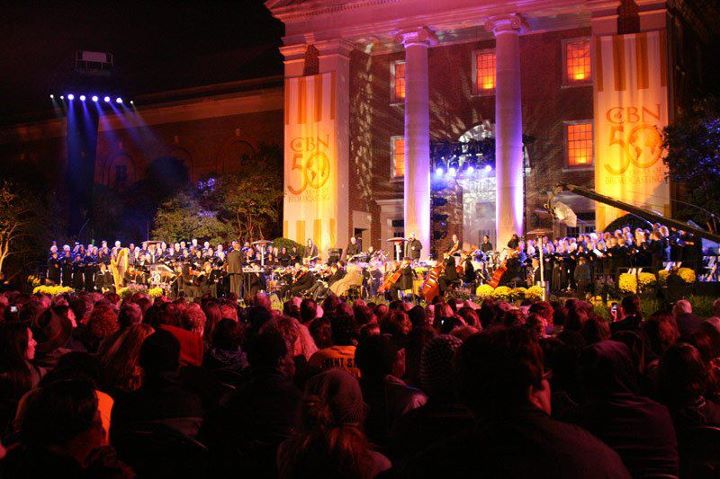 Thanks to Mark Teixeira for these shots.
Tech and scheduler Extraodinaire Mark Rincavage, myself, show mixer Garrett Rockey
Thanks to Mark Teixeira for these shots.
Tech and scheduler Extraodinaire Mark Rincavage, myself, show mixer Garrett Rockey
Thanks to engineer Shawn Brady for this pic!
= =
=













